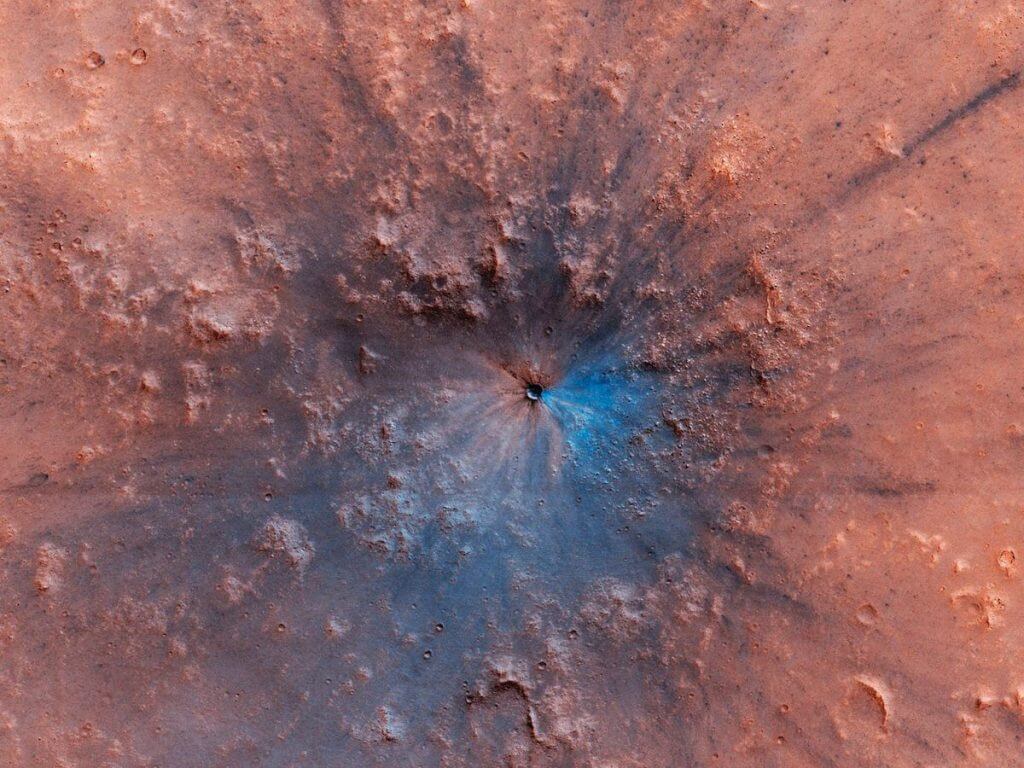
Why pummeled planets may be promising abodes for alien life (Image Credit: Space.com)
Cosmic impacts can make planets and moons more porous than previously thought, potentially boosting their ability to host life, a new study finds.
Our moon’s pockmarked surface is a testament to just how often cosmic impacts strike the planets, moons and other major bodies within the solar system. The cracks and pores that result from such pummeling can theoretically host water and potentially even microbial life.
In 2012, NASA’s Gravity Recovery and Interior Laboratory (GRAIL) spacecraft revealed that the crust of the moon is much less dense, and therefore more porous, than previously thought. The uppermost 2.5 miles (4 kilometers) of lunar highland crust is about 12% empty space, and down to depths of about 12 miles (20 km), the lunar crust still has a porosity of about 4%, the mission determined.
Related: GRAIL: NASA’s mission to study the moon’s gravity
This deep porosity has proven difficult for scientists to explain. Most current models of the moon can only explain high porosity near the lunar surface or within major craters.
In the new study, researchers developed computer simulations of the way cosmic impacts can fracture and generate porosity within lunar and Martian crust, as well as that of Earth. They found that giant collisions may have major effects on the surfaces and structures of those bodies, even very far away from the point of impact and deep into planets or moons.
The new findings help solve the mysterious lunar porosity that GRAIL uncovered.
“This is the first work that really shows that large impacts are capable of fracturing the moon’s crust and introducing this porosity,” study co-author Brandon Johnson, a planetary scientist at Purdue University in Indiana, said in a statement (opens in new tab).
“Our simulations indicate impacts that produce 100- to 1,000-kilometer [60 to 660 miles] scale basins alone are capable of producing all observed porosity within the lunar crust,” states the new study’s abstract, which you can find at the same site as the above statement. “Simulations under the higher surface gravity of Mars and Earth suggest basin-forming impacts can be a primary source of porosity and fracturing of ancient planetary crusts.”
By understanding where and why planets and moons have fractured, scientists may get a better idea about where to best look for life on distant worlds, the researchers said.
“This research has implications for the early Earth and for Mars,” study lead author Sean Wiggins, a postdoctoral researcher at Purdue, said in the same statement.
“If life existed back then, there were these intermittently big impacts that would sterilize the planet and boil off the oceans,” Wiggins added. “But if you had life that could survive in pores and interstices a few hundred feet or even a few miles down, it could have survived. They could have provided these refuges where life could hide out from these kinds of impacts.”
The scientists detailed their findings (opens in new tab) online Aug. 16 in the journal Nature Communications.
Follow us on Twitter @Spacedotcom (opens in new tab) or on Facebook (opens in new tab).





